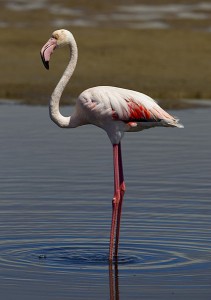
On the 15th and 16th April we had one of my favourite events at Trinity College Dublin: the annual School of Natural Sciences Postgraduate Symposium. Over the course of two days many of our PhD students presented their work to the School. We also had two amazing plenary talks from Dr Nick Isaac (CEH) and Professor Jennifer McElwain (UCD). For those of you who are interested in exactly what we work on here at EcoEvo@TCD, here are the abstracts from the PhD student presentations. Check out the TCD website for more details!
Danielle McLaughlin: BMP signalling disruption in the foregut of the Adriamycin mouse model of Oesophageal Atresia/Tracheo-Oesophageal fistula.
1/3500 neonates are born annually with Oesophageal Atresia/Tracheo-Oesophageal Fistula(OA/TOF), a birth defect of unknown cause, where the oesophagus fails to properly form and connect with the stomach. Despite corrective surgery, afflicted children have long-term health problems. Oesophagus and trachea arise from embryonic foregut. We use an animal model with OA/TOF-like foregut malformations, the Adriamycin Mouse Model(AMM), to investigate the developmental origins of these malformations. An important embryonic organising structure, the notochord, is abnormal in shape, position and molecular characteristics in AMM embryos. Current work focuses on Bone Morphogenic Protein signalling, analysing downstream events and showing very specific disturbances in AMM notochord and foregut.
Donna Hawthorne: What role did fire play in the Irish uplands, from the early Holocene to the present day, and how should fire be best managed in the future?
Significant changes in global and regional climate as well as changes in vegetation, land use, agriculture and policy, have promoted an increase in fires in the Irish landscape, especially in upland areas. Past climatic oscillations have been studied at 10 sites throughout Ireland in an attempt to understand the current climatic changes which may mirror future patterns in climate. This coupled with the palaeo-reconstructed landscape character and fire regime at each of these upland sites, will seek to develop a model of risk assessment and management for future fire in the Irish landscape. The data span from the early Holocene to the present day, drawing on charcoal and pollen data, radiocarbon dating, and mineral and chemical data from lacustrine sediments, as well as the historical record from a number of sites in Killarney National Park. This work presents the first chronological comparison of regional fire activity across various locations throughout Ireland, and provides a base line level of data which can be drawn on in future scenarios when fire frequency is expected to increase. This work is in its second year of a four year PhD programme and preliminary results will be presented.
Eileen Diskin: The f word. *Highly commended*
Antibiotic resistant bacteria are bacteria that can survive exposure to the antibiotics designed to render them harmless. You’ve probably heard them mentioned in the news; MRSA is frequently cited as an example of the threat they pose to human health. In this presentation, I will give an overview of my research on environmental reservoirs of antibiotic resistance. In sharing a selection of my results, I will address several questions: What does my approach have to offer? What challenges have I overcome in my research, and what opportunities have arisen as a result? I will conclude by considering what the next steps are, both in my project specifically and in this research area more generally.
Anurati Saha: The influence of mechanical forces for the definition of articular cartilage.
Articular cartilage covers the terminal ends of bones at synovial joints. It allows pain-free movement with injury or degeneration leading to diseases such as osteoarthritis Current treatment is whole joint replacement but stem cell regenerative therapies would offer a more sustainable solution. Previous research in the lab has shown that appropriate mechanical stimulation from movement of the embryo is required for normal joint formation; joints fuse when movement is absent. My project aims to increase our knowledge of mechanical regulation of joint development in a number of respects and to explore application of such findings to achieve stable differentiation of cartilage for alternative regenerative therapies.
Erin Jo Tiedeken [@EJTiedeken]: The buff-tailed bumblebee Bombus terrestris has poor acuity for the detection of toxins in nectar. *Highly commended*
Bees feed exclusively on nectar and pollen to obtain carbohydrates and proteins necessary for survival. Paradoxically, these plant products often contain toxic secondary compounds usually associated with defence against herbivores. Although these compounds commonly occur at low concentrations they may still have significant effects on pollinator behaviour and health. The aim of this study was to determine whether a generalist bumblebee, Bombus terrestris, can detect naturally-occurring concentrations of potentially toxic compounds in floral nectar. We found the detection thresholds for five plant compounds: quinine, caffeine, nicotine, amygdalin, and grayanotoxin, all of which are found in the nectar of plants pollinated by Bombus species. In paired choice experiments, individuals were offered both a sucrose solution and a sucrose solution containing a putative ‘toxin’. The detection threshold was determined when bees significantly preferred the sucrose solution to the solution containing the secondary compound. The detection threshold depended on the compound, but in all cases was above the naturally-occurring concentration range found in floral nectar. The inability of bumblebees, an important group of pollinators, to detect toxins in floral nectar suggests this plant trait may be maintained in plant populations if it confers any benefit to the plant.
Lindsay Hislop: Does nutrient enrichment moderate the effect of water level fluctuations on littoral communities?
Freshwater abstraction from lakes in order to support a growing human population is rapidly becoming a major global stress on lacustrine ecosystems. The consequent amplification of water level fluctuations disproportionately impacts lake littoral zones, which contain the majority of their biological diversity. However, remarkably little is known about the impacts of amplified water level fluctuations on littoral assemblages and less still is known about how they interact with nutrient enrichment, one of the most pervasive and important of human disturbances on the biosphere. To address this, an experiment was established in large outdoor mesocosms and the effects of water level fluctuations and nutrient enrichment, both separately and together were quantified.

